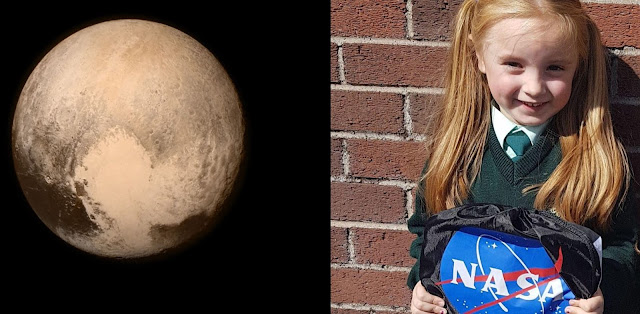Astronomers Hunt for Oldest Stars in Our Solar Neighborhood --"May Harbor Planets with Ancient Civilizations"
It was once said by Dr. Wei-Chun Jao, lead author of a new study and research scientist in the Department of Physics and Astronomy at Georgia State: “Finding old stars could also lead to the discovery of new planets. Maybe we can find some old ancient civilizations around these old stars. Maybe these stars have some planets around them that we don’t know about.”
Our home galaxy, The Milky Way, reaches an age that is approximately 14 billion years. It’s a very massive galaxy. Within this galaxy, the most antediluvian stars were formed in its early stages of formation, making them about six to nine billion years old. Such stars are found in the halo, a roughly spherical component of the galaxy that was one of the first to form and within it, old stars advance in eccentric orbits.
However, younger stars in The Milky Way rotate together along the galaxy’s disk in nearly circular motions, resembling horses on a merry-go-round. This study primarily focused on senior stars, known as cool subdwarfs which are very cooler in temperature than the average star, such as the Sun.
In a new study published in the November edition of the Astronomical Journal of this year, astronomers conducted a census of sorts of our solar neighborhood in an effort to quantify the amounts of young, adult, and old stars are currently existent. Stars of a distance of approximately 200 light years were targeted in particular, which is farther than the traditional horizon of space referred to as the “solar neighborhood” which is typically 80 light years in radius.
Dr. Wei-Chun Jao explained why the horizon was more distant in the following statement: “the reason my horizon is more distant is that there is not a lot of senior citizens [old stars] in our solar neighborhood. There are plenty of adult stars in our solar neighborhood, but there’s not a lot of senior citizens, so we have to reach farther away in the galaxy to find them.”
First, astronomers observed stars for a multitude of years using the 0.9 meter telescope located at the Cerro Tololo Inter-American Observatory in the foothills of the Chilean Andes using the astrometry technique. This technique was used in order to measure the positions of the stars and to nail down their motion across the celestial field, how distant they are from Earth, and whether or not a particular star had a planet orbiting it.
As a result of this study, the known population of senior citizen stars had increased by a staggering 25 percent. Also, amongst the subdwarfs, two new binary stars of a significant age were discovered which is exciting because typically, senior citizens stars are alone and devoid of a partner.
After such a discovery Jao went on to speak of his next actions in the study: “I then used NASA’s Hubble Space Telescope to detect both stars in one of the binaries and measured the separation between them, which will allow us to measure their masses.”
This study also resulted in two newly formed methods to identify such rare, senior stars. One such method employs the star’s locations of a fundamental map of stellar astronomy known as the Hertzsprung-Russell (H-R) diagram. It’s a classic technique placing old stars underneath the sequence of dwarfs on the diagram-- hence the title of “subdwarfs.”
The team of researchers went on to take an analytical glance at the movement of subdwarfs across the sky. Jao spoke about this technique as well: “Every star moves across the sky. They don’t stay still. They move in three dimensions, with a few stars moving directly toward or away from us.”
“But mostly moving tangentially across the sky. In my research, I’ve found that if a star has a tangential velocity faster than 200 kilometers per second, it has to be old. So, based on their movements in our galaxy, I can evaluate whether or not a star is an old subdwarf or not. In general, the older a star is, the faster it moves.”
Researches applied this finding and compared stars located in the subdwarf region of the diagram to other existing stellar databases, leading to an additional discovery of 29 previously unidentified senior star candidates, which is quite interesting.
In the next year of 2018, results from the European Space Agency’s Gaia mission measuring accurate distances and positions of millions of stars in our galaxy are expected. These findings will aid researchers in identifying subdwarfs at a previously unprecedented speed and ease. Currently, to determine the distance of a star, labor is required-- hours of telescope time and generous patience is required. Because the results of the Gaia mission will provide a large-scale sample size, Jao confirms that the amounts of subdwarfs will multiply and even the rarest type of subdwarf-- the binary subdwarf-- will ultimately be revealed.
Staggering.

Comments
Post a Comment